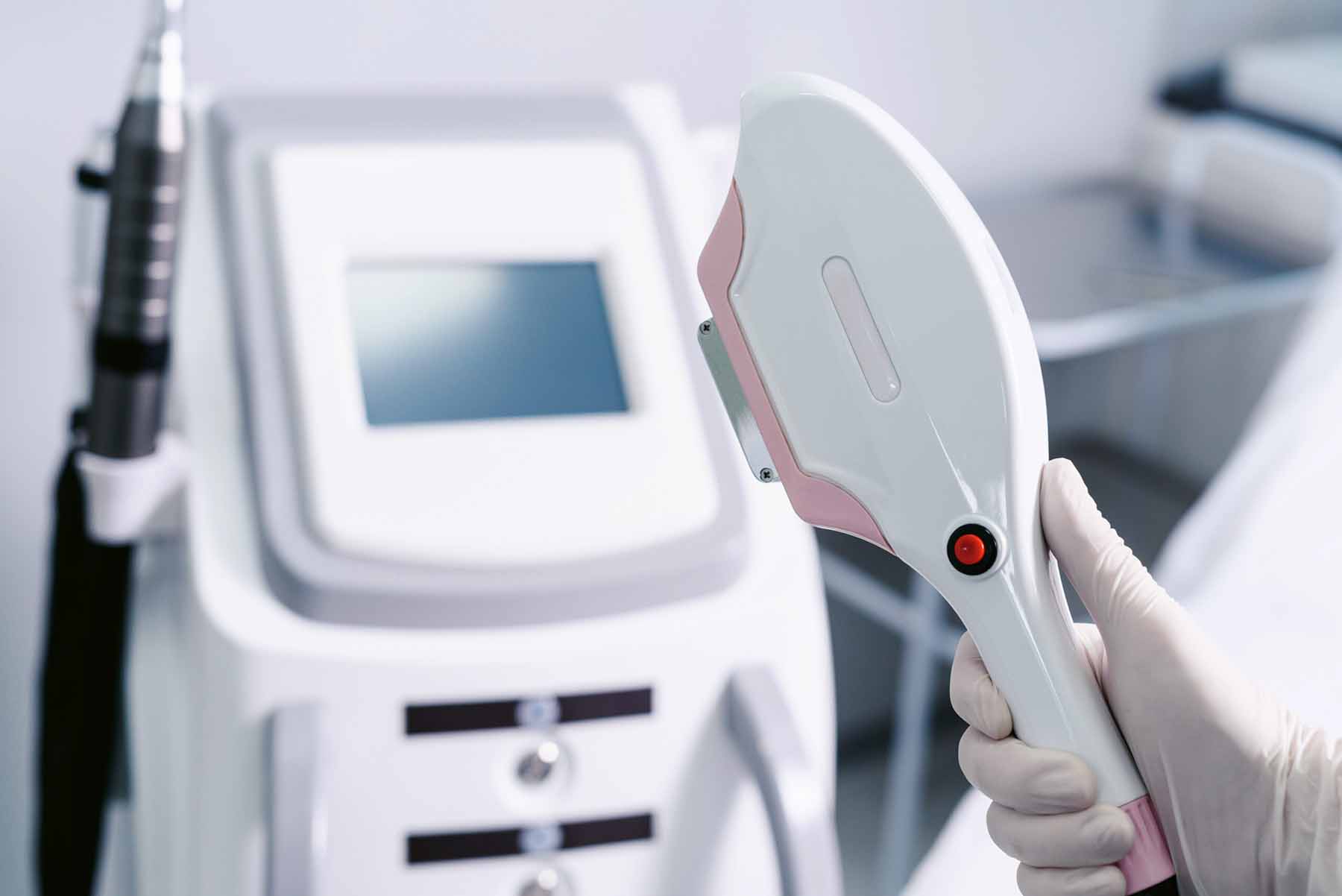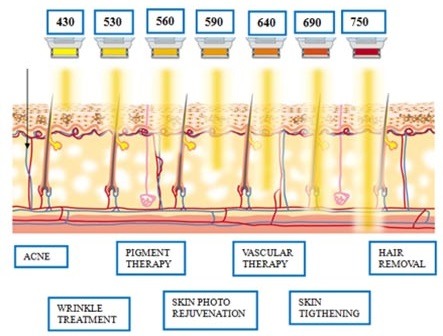Intense Pulsed Light (IPL)
Why Intense Pulsed Light (IPL)?
Intense Pulsed Light (IPL) is not the same as a laser. IPL releases pulses of energy through light in a broad wavelength range which produces heat on the skin. A laser projects energy in a very narrow wavelength range which is more focused and therefore produces bleeding (purpura). Thanks to the broad wavelength range, IPL gives less focused heat which reduces the amount of bleeding. The light targets haemoglobin in red blood cells which aims to close the local vessels and reduce the blood supply to the growth of the scar tissue.
Main improvements
- improve colour
- improve texture
- pliability of the scars
Adverse effects
- mild erythema
- mild swelling
Recommendations
Effects are achieved through reducing pigmentation/vascularisation and therefore the bulk of the scar tissue.
Treatment with this device can be done without anaesthesia. After treatment the blood vessels in the treated area often have a blue-greyish coloration. Following treatment, UV exposure should be avoided for at least 24 hours.
The effectiveness of IPL increases when it is combined with other laser treatments or bipolar radiofrequency. A wide variety of IPL devices are available on the market, not all of them are trustworthy. Regulations for IPL devices are not as strict as those for lasers. Therefore, it is very important to receive advice and treatment from a trained and specialised practitioner with experience in IPL and scars.
F.A.Q.


